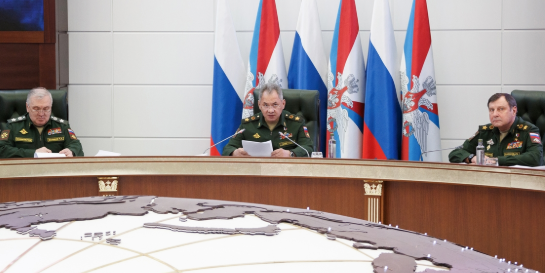Militaryparitet.com took time to highlight an article from Rusinfotoday.com on the deaths of Privates Lantsov and Tsybuk, as well as the case of the Samara conscripts in Astrakhan.
21-year-old Kemerovo native Yevgeniy Lantsov last communicated with his wife on 5 January. In her words, he coughed more than he talked, and he told her he couldn’t get out of bed.
The military hospital refused to admit Lantsov because they didn’t think he was from one of their units. It was only on 7 January that Lantsov was seen in a medical unit. His command subsequently said that they had just moved, and their own medical unit was not set up.
On 10 January, now in serious condition, Lantsov was transferred to the military hospital that originally refused him, and it promptly sent him to the Chelyabinsk Oblast Hospital.
Meanwhile, Lantsov’s command didn’t inform his parents about his condition; they found out when they called the hospital using a telephone number they got from the Internet. Learning their son wasn’t getting better, they immediately flew to Chelyabinsk.
Lantsov’s mother and father met with a deputy military prosecutor in Chelyabinsk. According to them, the prosecutor said:
“If you hadn’t come to us, we wouldn’t have known anything about this.”
On 21 January, Lantsov’s parents gave the prosecutor a statement about the absence of prompt medical care for their son, and the next day he died.
The elder Lantsov said:
“No one is concerned about soldiers. No one needs a soldier. They’re called up and abandoned. What need was there to move the unit right before the New Year, when there’s such a freeze? Officers themselves were in confusion, they had just settled in a new place, and nobody worried about the soldiers.”
For two years, Lantsov had a deferment because of a heart problem. But he was inducted a month and a half after his daughter’s birth. His father says:
“We asked for a deferment until spring – his wife was in the hospital with complications for a month after delivery, but they told us – they are discharging your wife, and we’re taking you. They just have to fulfill the plan. The order came from above – shave [i.e. induct] them all in turn.”
So Yevgeniy went in the army with a diagnosis of tachycardia and “insignficant limitations” on his service. Being ordinary miners without connections or money to buy his way out, his parents weren’t able to help him evade service. So, the dead serviceman leaves a wife, infant child, and a 7-year-old adopted daughter.
Private Konstantin Tsybuk died from an aggressive form of meningitis, although he’d been diagnosed with pneumonia. He left a wife and 10-month-old daughter in Cherbarkul. The military commissar of Chelyabinsk Oblast Nikolay Zakharov comments:
“The ‘father-commanders’ didn’t worry about normal, ‘human’ conditions of life for their own soldiers, as a result of this, in the full swing of winter’s freeze, one of them died. It’s very bad that a soldier perishes in peace time, and not in the fulfillment of a combat mission. The investigation is on-going and will bring the guilty people to account.”
More than 60 soldiers from Tsybuk’s unit are in the hospital with pneumonia. Over the New Year’s holiday, the unit’s boiler blew up and the boiler house burned down. And conscripts had just arrived, and were settled in the frozen barracks. Tsybuk’s relatives said he called home and said that he had to sleep in his overcoat.
The Main Military Prosecutor is investigating the illnesses in Tsybuk’s unit, and has found that certain officers did not conscientiously fulfill their duties in protecting the lives and health of their soldiers. Senior Lieutenant Igor Gurov is being charged with negligence in Tsybuk’s case.
Lastly, Samara conscripts who arrived sent to Astrakhan were living in tents, according to the mother of one soldier, on a dirt floor covered with mattresses, without hot water, while it was -20° C (-4° F).
Many of them got sick, and their commanders didn’t hurry to get them medical attention until their parents went to the human rights ombudsman for Samara Oblast. After this, their situation improved. The sick were hospitalized, and the others got wooden floors for their tents and hot food.
Rusinfotoday.com concludes such stories are a dime a dozen:
“There isn’t a person in Russia who doesn’t know that our army is slavery.”
The army doesn’t spend money on elementary but expensive things like real medicine, hospitals, and doctors because:
“Soldiers are an expendable resource which everyone wants to make a profit on.”
“Our country simply doesn’t and won’t have an army. Just the lives of young men driven into slave work, sacrificed right and left for practically no reason.”
Nezavisimaya gazeta’s Vladimir Mukhin has an article today claiming sources tell him there’s an army pandemic, with more than 2,500 men in the hospital with URIs, including more than 500 with pneumonia. And the military’s medics have been cut 5-7 times.
The Main Military-Medical Directorate, meanwhile, is under investigation by both the Audit Chamber and the Main Military Prosecutor for questionable use of its budget in some instances, according to Mukhin.
In other related news, this morning IA Rosbalt reported an Australian citizen has died of swine flu in Ufa.
Tvoy den says Lantsov’s unit is under a quarantine, and has 36 soldiers in its medical unit with URIs.
IA Regnum reported Friday that there are some quarantine measures in place in Chelyabinsk, where 95 people have allegedly contracted swine flu.









